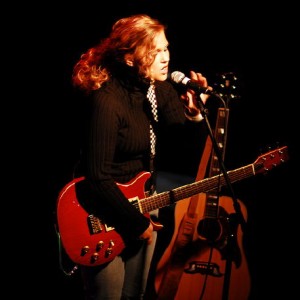Transitions: Don’t Let the Tail Wag the Dog!
 In a rehearsal, transitions tend to get pushed to the back of the schedule; and in most cases, rightfully so. But, it doesn’t mean they’re not important.
In a rehearsal, transitions tend to get pushed to the back of the schedule; and in most cases, rightfully so. But, it doesn’t mean they’re not important.
Have you ever heard the saying about “the tail wagging the dog?”Sometimes transitions have a tendency to do that when putting a show together.
I can’t tell you how many times I’ve heard the comment, “We can’t do that song next because I’d have to change guitars and I don’t want to.” Or, “I can’t sing those two songs back to back!” Or, in some of the bigger shows I’ve worked on, “I need to change my outfit here.”
These are all legit excuses you need to take into account when putting your show together.
But are you going to let a small inconvenience control how the set is put together? Because if that song would work best in that spot during the show, you need to do everything you can to work it out!
This is where transitions come in. Sometimes it is as simple as starting a song with a groove, the singer saying a quick couple of sentences to fill so the guitar player can switch guitars and get ready to play the song.
On the other hand, transitions can be involved and creative. Often I’ll use the intro for the next song to develop a transition that might become a moment in itself. One time I used a cello and acoustic guitar intro that was a moment by itself before the song ever started.
On one tour, I worked on a transition that became a time to let two guitar players shine. We created a guitar burn/tradeoff moment that probably lasted for three or four minutes while costume and set changes were going on. We spent hours in rehearsal working each of these transitions out.
In addition, technology has become more affordable and doable — so video is something I’ve used often. It can make a great transition.
No matter what you use in these situations, the idea is to make your transitions “moments” to the audience so they won’t even notice what is going on in the background.
I know most transitions aren’t that elaborate, but generally my approach is that if there’s a will, there’s a way! Sometimes changing instruments, getting stools in place, getting to a certain spot onstage to start the next song, can be involved.
But, part of what should happen at rehearsal is talking through it, working on how you are going to accomplish the transition, working out all the bugs as you go, and practicing it until you’ve got it.
So typically at rehearsal, you’d play the end of a song, work on the transition, and start the next song. Repeat that process until you’ve got it and it’s comfortable. I’ve worked on shows where we’ve spent an entire day or two just working on transitions between the songs.
On the other hand, you may be a singer/songwriter with no big set changes, no costume changes, no one on stage with you. Your transitions are obviously not going to be as elaborate, but you should still think through the transitions and practice them; switching instruments seamlessly (switching guitars, going from guitar to piano, etc.), pulling a stool up, adjusting mic stands, etc.
And I still like to develop a few creative transitions musically, vocally, or verbally, that will keep your audience engaged because no one likes dead air; the audience or the artist. It’s what my daughter calls an “aw-w-wkward” moment! This creates tension in the room, takes away from your authority onstage, and makes you appear less professional.
If you are a singer/songwriter, a soloist fronting a band, the leader of a combo — the verbal portion of transitions falls entirely on you. Being able to connect one song to another verbally, setting up a song with a story, doing introductions, giving merchandise pitches between songs … verbal skills are an important part of transitioning, and I don’t like the artist “winging it.”
So, in rehearsal I want to hear what they are going to say. If I’m with others onstage there needs to be a cue so everyone knows when to lead into the next song. And, I want to rehearse it before we get in front of an audience!
Some of you have the gift of gab and don’t need to rehearse this very much. Or, you may struggle with verbal skills and will need to write down what you’re going to say, and work through it in the rehearsal hall so there aren’t any awkward moments.
If you’d like to learn more about speaking during your show, check out the article from last week on 5 Places to Talk in Your Show: Stage Banter…
 In a rehearsal, transitions tend to get pushed to the back of the schedule; and in most cases, rightfully so. But, it doesn’t mean they’re not important.
In a rehearsal, transitions tend to get pushed to the back of the schedule; and in most cases, rightfully so. But, it doesn’t mean they’re not important.